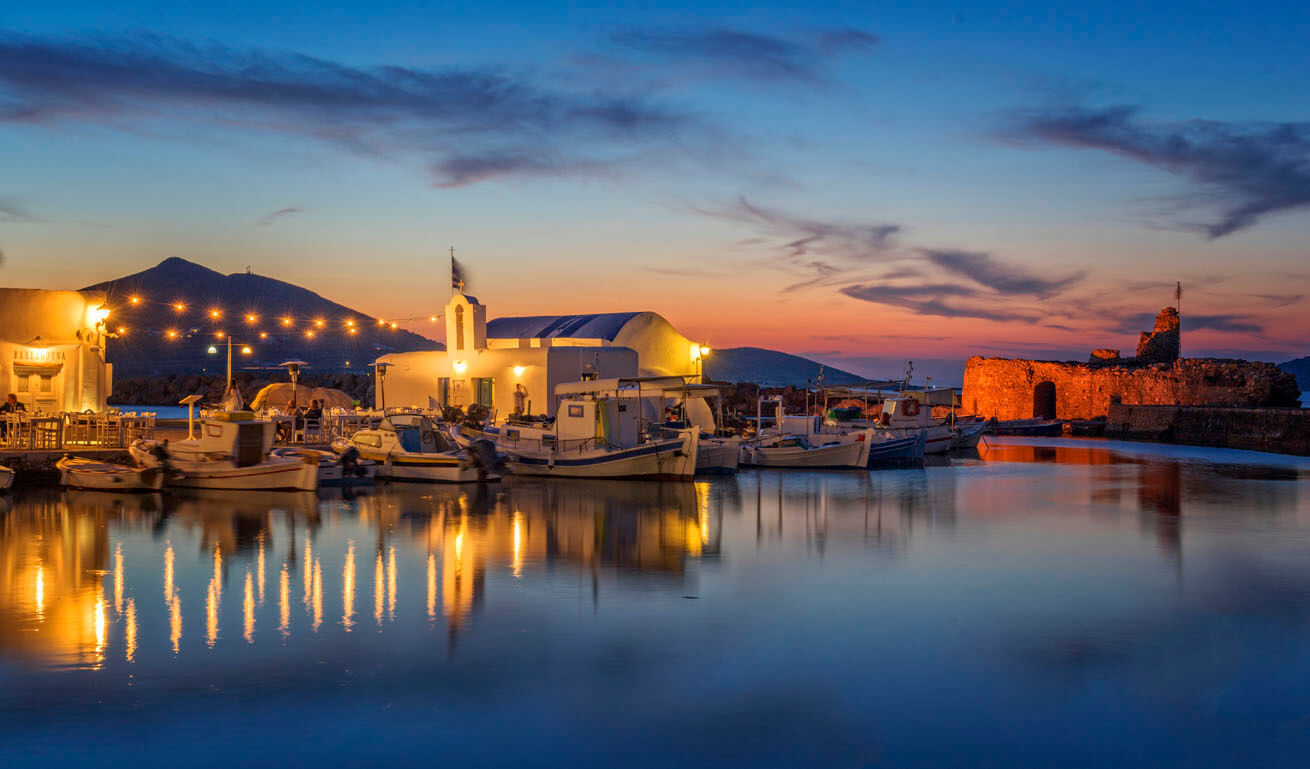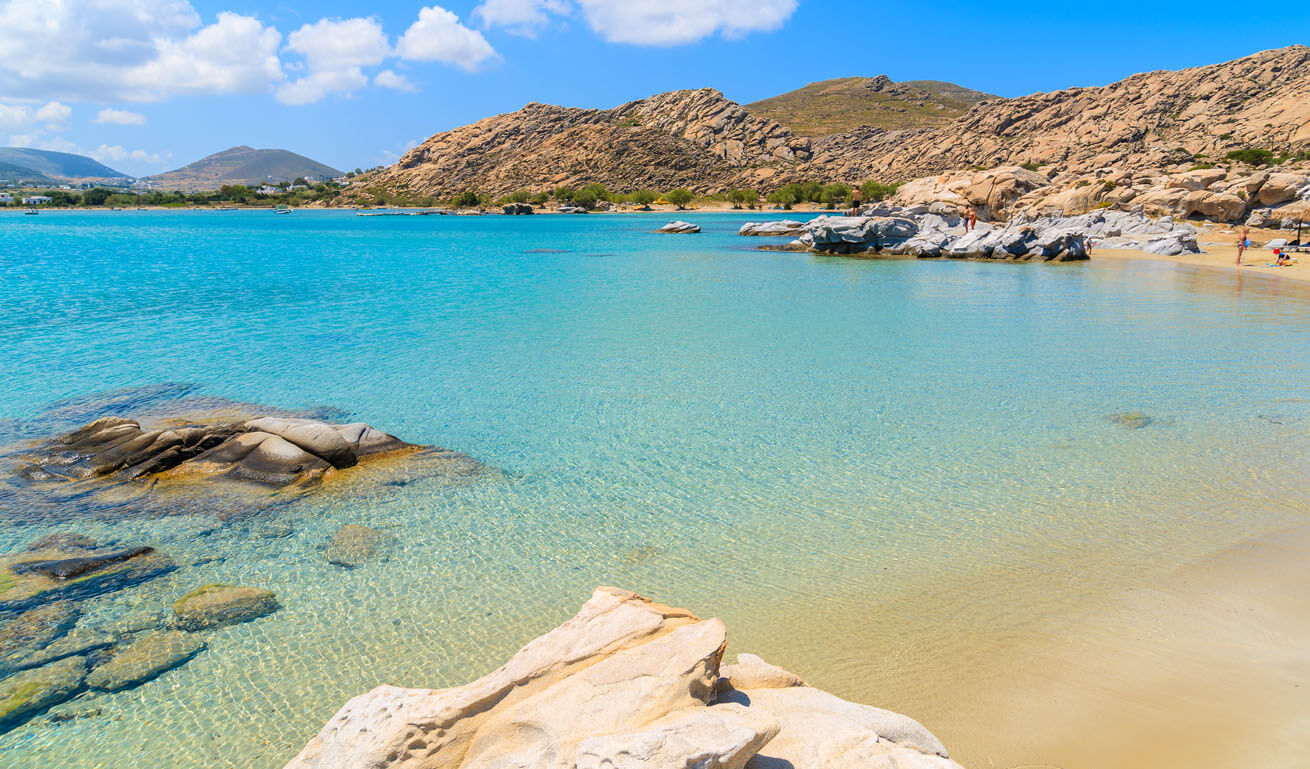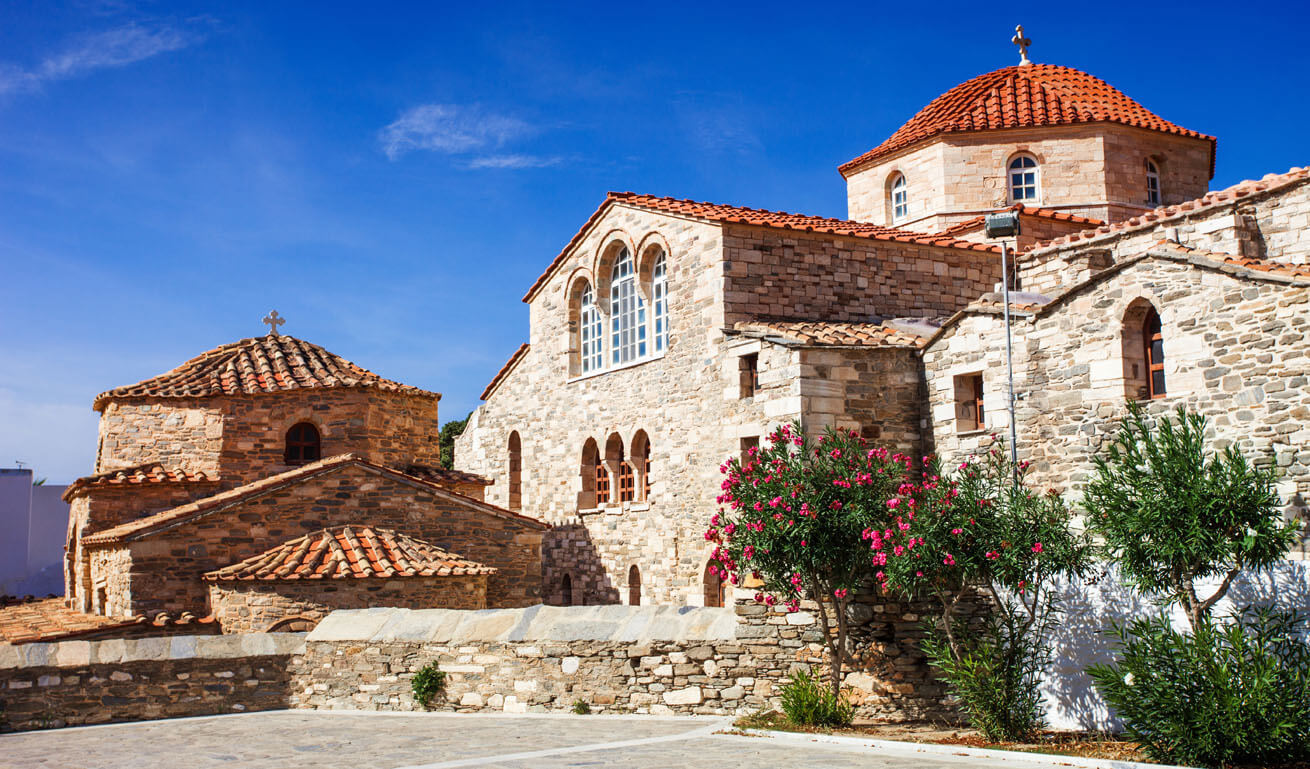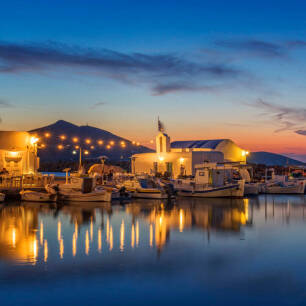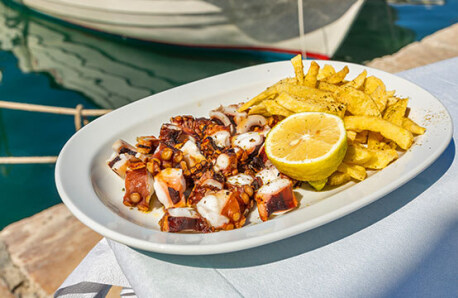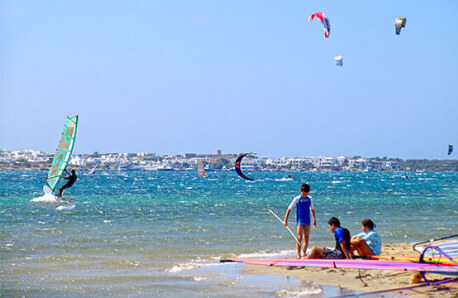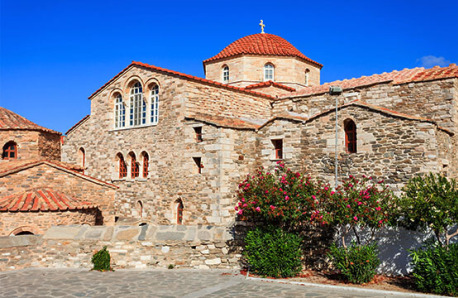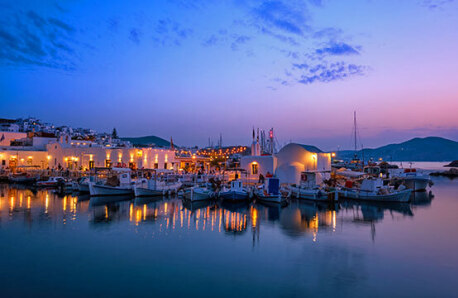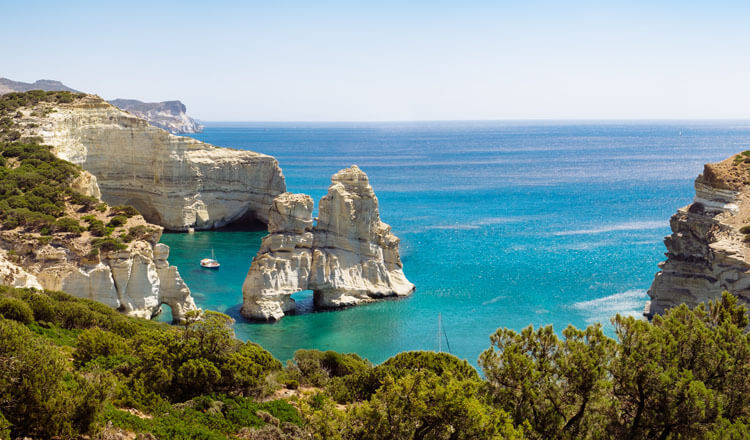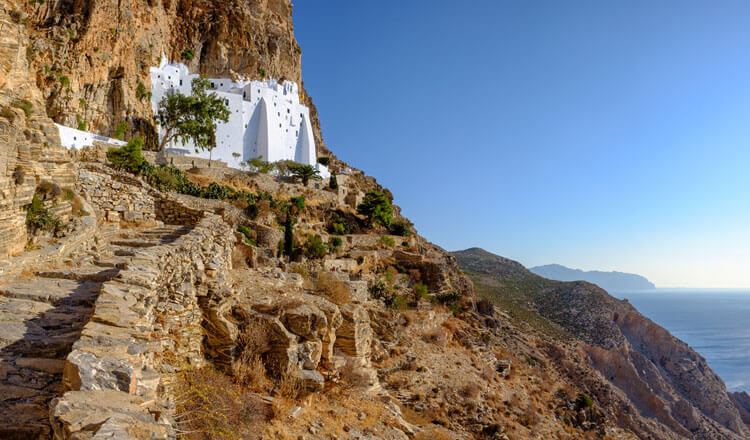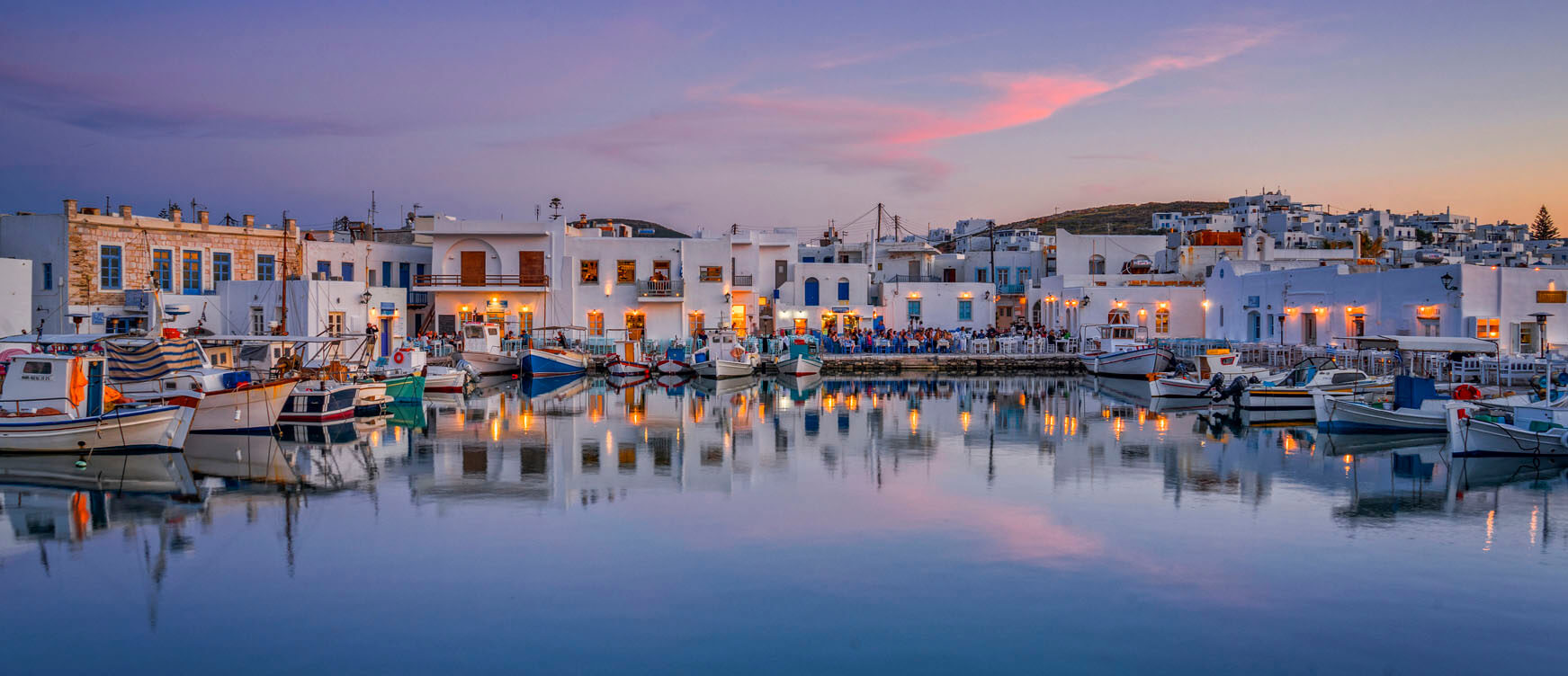
Paros
NOW
32 °C
Next 5 days
-
THURS
27 °C
-
FRI
30 °C
-
SAT
30 °C
-
SUN
31 °C
-
MON
32 °C
Climatic Data
Source: National Observatory of Athens /meteo.gr
Unique Experiences
Touring the Island
Beautiful villages surrounded by idyllic nature are what you’ll come across as you explore the island. Start your trip from Paroikia, located on the site of an ancient town. Today, it is a port town and the island capital. Among the white cube-shaped houses of the village, you will see neoclassical and mediaeval ruins of buildings. In the summer, the alleys of the old traditional village become lively with visitors strolling along and shopping or enjoying their meals in tavernas and restaurants.
Make sure you visit the church of Panagia [Virgin Mary] Ekatontapyliani or Katapoliani; it’s an impressive building dating to the Early Christian Period in Greece. Its second name - Ekatontapyliani or Katapoliani - means either that the church faces the ancient town [Katapoliani] or that, according to tradition, it has 99 visible doors (pyles) and a secret one [Ekatontapyliani - ‘ekato’ meaning one hundred]. The original church was built in the 4th century, and the older murals date to the 7th - 8th century. It is structured like a monastery, with a courtyard, monastic cells and impressive chapels in it. Visit also the Baptistry (4th c.), an East Orthodox monument that is the best preserved of its kind; see also the remarkable exhibits in the Byzantine Museum.
Take a trip to the Venetian Castle (13th c.), set on a hill at the centre of the traditional village. The south and east part of the walls still stand as well as a defensive tower, and there’s a number of beautiful churches in the vicinity.
Visit the Archaeological Museum and see the wide variety of exhibits from the island’s archaeological sites [the sanctuaries of the gods Asklepios (Asclepius) and Pythios Apollo, Dilio etc.] and the remarkable prehistoric finds from the nearby islets of Antiparos, Despotiko and Saliago. The Pario Chronicle is a 3rd c. BC inscribed stele, which mentions important events and personalities of Greek Antiquity. Close to Paroikia (5.5 km E), by Marathi village, is the location of the ancient marble quarry. This is where the top quality local marble was mined, well-known for its whiteness and translucence.
See also the nearby archaeological sites: the remains of the archaic temple of Athena (525 BC) in the castle; the graveyard of the ancient town (near the harbour); the pottery and sculpture workshops dating to the Hellenistic times [4th - 1st c. BC]; the ruins of a Roman building (behind the Archaeological Museum); the East Gate of the ancient walls; the sanctuary of Asclepius (4th c. BC) on a hill on the road to Alyki, and the nearby sanctuary of Pythios Apollo (4th c. BC); Dilio (NE of the town) where Apollo, Lito, and Artemis were worshipped, as well as the remains of a 6th c. BC temple; also the arched building dating to late antiquity, located near Krios area.
In the old town’s main streets (Lochagou Fokianou and Lochagou Gravari), there are many shops, cafes, and restaurants built in the local island style.
Naousa
Travel to Naousa, a picturesque fishing village and a popular tourist destination, with a half-sunken Venetian castle by the harbour. Colourful fishing boats, traditional white-washed houses and a variety of cafes, fish tavernas, bars and clubs that line the narrow backstreets have made up the special character of this place. Make sure you take a walk towards the Venetian castle, at the harbour entrance, and enjoy your coffee or your drink, as well as the clear view of the deep blue Aegean sea before you.
Lefkes
This is an impressive mountain village surrounded by vegetation, built in the local neoclassical island style. There are beautiful squares and narrow alleys paved with marble. The village is located on the highest location of Paros, offering breathtaking views of the island and the sea.
Visit the Folk Culture Museum of the Aegean Sea and learn more about the cultural practices in the archipelago. The exhibits refer to the Aegean island architecture, the traditional crafts, and minerals extracted on these islands.
Marpissa
Take a trip to this traditional village with the mediaeval structure, at a few kilometres distance from Logara and Piso Livadi popular beaches, and close to the great historical monuments on Kefalos Hill. See also the old windmills, the village’s landmark.
Make sure you visit Marpissa during the three-day cultural festival where visitors and locals are actively involved in the event. It takes place every year in August. Walk up the neighbouring Kefalos Hill and see the deserted Venetian town and the castle; the 17th c. monastery of St. Anthony with breathtaking view.
Agairia - Alyki
These two beautiful villages are close to each other. Agairia is built in a green area and Alyki is a seaside village and a popular tourist destination. Make sure you visit Skorpios, a Cyclades Folk Museum in Alyki, founded by B. Skiadas, a local artist. Take also a trip to Faranga and Trypiti beaches, as well as to Lolantonis and Glyfa beaches in Aspro Chorio location.
Piso Livadi
This pretty village is a peaceful and relaxing holiday destination. There’s a lovely sandy beach, and also many restaurants, cafes and cosy bars to suit your taste. Logaras and Pounda beaches should definitely be on your list of places to visit - the second one being a favourite spot among young visitors. From the location of St. Nicholas Church you will enjoy the lovely view to Naxos Island. See also the Byzantine church of St. George Thalassitis (late 13th c.) on the hill overlooking Logaras beach.
Dryos
It’s a seaside village with a small harbour where small boats are moored. Along the waterfront you’ll find traditional restaurants, cafes and bars. Make sure you visit the location of the ancient boathouses, where the locals used to keep their boats, as well as the country chapel of St. Nicholas.
Petaloudes
Close to Psychopiana village, there is an area of great beauty called Petaloudes (meaning Butterflies), which is definitely worth visiting. It’s the habitat of a butterfly species called Panaxia quadripunctaria, a place with lush vegetation and spring waters, very high plane trees, laurels, and wild olive trees.

BY SEA
Paros is connected to Piraeus and other Aegean ports. The conventional ferries make the route ""Piraeus - Paros"" in about 6.5 hours while the high-speed ones in about 4.Paros is also connected with the ports of Lavrio and Rafina's.The ports of Naoussa and Piso Livadi connect Paros with other Cycladic Islands

BY PLANE
Paros is connected to Athens International Airport, the flight lasts 40 minutes but also to Macedonia International Airport (Thessaloniki), it is also connected to other airports in Greece.

